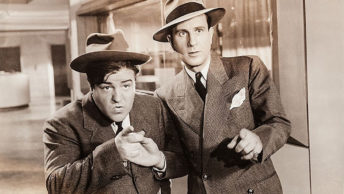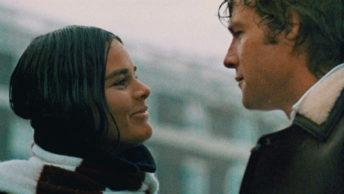Left-wing anti-Trump hysteria is reaching a fever point. It is seen in small incidents such as Senator Chuck Schumer (D-NY) causing a scene at a fancy New York City restaurant by yelling at a Trump supporter, or progressive groups warning that Trump is building concentration camps along the southern border for illegal aliens. Outlandish rumors that the new administration was planning on holding LBGT people in internment camps have been circulating since Trump was elected president.
This hysteria has led to calls from leading Democrats, including Hillary Clinton and former U.S. Attorney General Loretta Lynch, for massive resistance. All but three Senate Democrats resisted confirming Judge Neil Gorsuch to the Supreme Court. Angered by Trump’s surprise victory in November, left-wing activists mobilized to violently disrupt invited speakers on campuses such as Middlebury College and University of California, Berkeley.
This resistance has one goal: to delegitimize the Trump presidency. This strategy has propelled the Democratic Party further to the left by empowering grassroots ultraleftists—anarchists, revolutionary socialists and, let’s face it, numbskull college students—to undertake acts of violence. A strategy by a major political party, one that recently controlled the White House, based on mobilizing loonies appears crazy in itself. What has been revealed in this resistance strategy and the shutdown of free speech on campus is the authoritarian nature of the progressive left. Progressives declare they are fighting fascism in America. Progressive social scientists in universities are pursuing specious (and sometimes falsified) studies that supposedly confirm that conservatives suffer from “authoritarian” personality traits. Meanwhile the authoritarianism of the left is on display in their actions.
Silencing Intellectual Diversity on Campus
Attacks on free speech on college campuses over the course of the last months left many wondering what in the heck is happening at today’s universities. No doubt it’s shocking when speakers such as Heather Mac Donald, Charles Murray and other speakers with views divergent from political correctness are shouted down and need police protection to escape violent mobs. Simply dismissing unruly college students and their allies as over-indulged “snowflakes” fails to capture the threat these protesters pose not only to freedom of speech, but to the fabric of civil society. Many of the protesters see themselves as revolutionaries, and they are willing to embrace violence to impose their political views on the rest of society. Radicals and revolutionaries should be taken seriously.
In early April, Heather Mac Donald, a scholar from the Manhattan Institute, was prevented from speaking at the University of California, Los Angeles. Things turned even nastier the next day when she tried to speak at the nearby Claremont McKenna campus. She was invited by the Rose Institute for State and Local Government at Claremont McKenna to speak about her new book, The War on Cops. Mac Donald can be occasionally flamboyant in rhetoric, but she marshals an array of devastating statistics to back up her argument that police are under attack in many large cities.
Oppressors Against ‘Oppression’
Whatever Heather Mac Donald is, she is not a rabble-rouser, and she is not a fascist or part of some alt-right movement conspiring to impose a totalitarian state in America. Actually, in graduate school studying English she considered herself a left feminist. Her views began to change only when she got fed up with postmodern and gendered critiques of literature. She concluded that feminists did not appreciate the beauty of great literature and were authoritarian in suppressing scholarly dissent.
Her talk at Claremont McKenna turned quickly violent. Prior to her arrival, “students of color” at Claremont Colleges posted on Facebook calling on their fellow students to shut down “notorious white supremacist fascist Heather Mac Donald.” The post declared with typical self-righteous left-wing rhetoric that “we CANNOT and WILL NOT allow fascism to have a platform. We stand against all forms of oppression and we refuse to have Mac Donald speak.” (These unnamed students, it might be noted, stood against all forms of oppression, except when they are doing the oppressing.)
This declaration set the stage for what followed. Protesters surrounded the auditorium where Mac Donald was scheduled to speak. They were greeted by two dozen Campus Safety and Claremont police officers. Several administrators appeared but did not confront the protesters. Some of these administrators seemed even to sympathize with the protesters, including Pomona Associate Dean Collin Eaglin, who later told the press, “Black Lives Matter is really in my heart.” By the time Mac Donald went on stage, an estimated crowd of 300 students had gathered. Fearing for her safety, the administration decided that she would live-stream her speech in an empty auditorium. After two questions from the audience watching on live stream, Mac Donald was whisked away for her own safety when the mob began pounding on windows.
The suppression of Mac Donald’s right to speak on a college campus should be condemned even if this was only one incident on a college campus, but it has become a pattern across many campuses. In March, Charles Murray was shouted down at Middlebury College and Professor Allison Stanger, who was escorting him through a mob outside the lecture hall, was violently attacked and had to be hospitalized. In February, a riot ensued when Milo Yiannopoulos came to speak at the University of California, Berkeley, forcing him to cancel his speech. It remains to be seen whether any of the rioters will be punished.
These attacks on the free speech of notable public figures attracted national attention in the mainstream and social media. What is reported less is the daily suppression of free speech by students with right-of-center views in the classroom and campuses through peer pressure, hostile faculty who control grades, and administrators who have agreed to ban “hate speech.” Speakers with right-of-center views are rarely invited to speak on college campuses in the first place by departments or regular university-supported lecture series. Murray, Mac Donald and Yiannopoulos were invited by conservative/libertarian campus groups.
The Long Campaign against Free Speech
The recent attacks on free speech on college campuses are not a new phenomenon. As Stanley Kurtz, the Fox network media critic, observed in a National Review article, similar attacks on free speech began in the 1960s. The November 2016 election of Donald Trump as president helped fuel the recent activism and provides a ready excuse for protesters, but this campaign began earlier. Kurtz notes that disruption of pro-Israel speakers, gun rights advocates and alleged anti-environmentalists had occurred well before Trump’s election. Silencing incidents were already in full swing.
Kurtz recounts that in 2001 angry students stormed the offices of the Daily Californian, the UC-Berkeley student newspaper, to destroy copies of the paper containing an op-ed by conservative gadfly David Horowitz in response to the slavery reparations movement. Thefts and destruction of college newspapers publishing speeches by former Secretary of State Henry Kissinger, the affirmative action opponent Ward Connerly and Second Amendment supporter Charlton Heston were occurring by 2001. David Horowitz was a target for protests throughout the early 2000s. Kurtz reports that Horowitz had to be protected by a police squad when he spoke at the University of Michigan, the Massachusetts Institute of Technology and Princeton. He was not the only speaker to be shut down.
In 2000, some 200 demonstrators broke through police barricades at UC-Berkeley to prevent the then former Israeli prime minister Benjamin Netanyahu from speaking. From the mid-1980s to 2000, targets of disruption included Secretary of State Madeleine Albright, Supreme Court Justice Sandra Day O’Connor and former NATO commander General Wesley Clark. In 1983, UC-Berkeley hecklers prevented the U.S. ambassador to the United Nations Jeane Kirkpatrick from speaking. A few weeks later she was shouted down at the University of Minnesota and her scheduled 1983 commencement address at Smith College was canceled.
Four Waves Since 1960
Kurtz identifies four waves of the anti-free speech movement, or as the left likes to call it, the “anti-hate speech” movement. The first wave came in the 1960s when New Left radicals declared that the constitutional right to free speech should be restricted because the concept of free speech was a tool of the capitalist ruling class to protect an oppressive bourgeois liberalism. They drew on the thought of Marxist philosopher Herbert Marcuse, which tarred bourgeois liberalism as little more than a means of maintaining cultural hegemony. Constitutional rights protecting free speech, voting rights and equality of opportunity were just tools to prevent radical mobilization to fight for meaningful rights such worker ownership of the means of production, distribution of wealth, and social equality—in short, dictatorship of the proletariat.
The second wave of anti-free speech came in the mid-1980s, when college faculty and students began attacking required Western Civilization courses. Teaching these courses was denounced as propagating economic and cultural imperialism. Radicals began demanding speech codes to restrict contrary opinion, especially students and faculty who challenged the radicals in the debate about the value of Western Civilization courses.
The third wave against campus free speech came in the mid- 1980s when many old-fashioned liberal professors, who had come of age during the Second World War and who had witnessed the destructive consequences of fascist and communist totalitarianism, began to retire. This was a decade when many young radical professors entered the academy, received tenure and gained control of departments. The social sciences and the humanities became homes to radical professors who encouraged and joined student radicals in condemning free speech by alleged fascists, imperialists, Zionists, warmongers, racists—well, nearly anybody who was not seen as a progressive.
The fourth wave against free speech began in 2014, when millennial college students started demanding “safe spaces” and “trigger warnings.”
Roots of Radical Repression
Kurtz’s analysis of the continuity of the anti-free speech movement is correct, but he does not go far enough in his analysis. Authoritarianism remains at the core of the radical left. Marxism is intrinsically opposed to civil liberties. Karl Marx called for the “dictatorship of the proletariat” to replace the freer political regime that took root in Europe in the 18th and 19th centuries. The history of the Communist Internationals manifested this dictatorial mindset. Marx established the Second International organization in 1889 as a means of banning the anarchist faction in the First International workers’ movement. The Bolshevik leader Lenin later established the Third International in order to ban social democrats who called for working within the established liberal order to win elections.
Lenin’s and Stalin’s followers in the United States, through the Communist Party, called for free speech rights when it suited their interests, but they never believed that free speech was anything but an illusion. In the 1947 House Un-American Activities Committee hearings, communists within the Hollywood movie industry claimed as their defense the First Amendment constitutional right to free speech. (In later hearings, they would use the Fifth Amendment right not to incriminate oneself as their defense.) They sought to show that their rights to free speech were being suppressed by anti-communists supposedly bringing fascism to America. In reality, members of the Communist Party never believed in free speech in the first place.
This intolerance was evident as early as during the Second World War, when American communists called for the suppression of free speech for fascists—or any opponent denounced as fascist. In 1943, Communist Party boss Earl Browder spoke in favor of outlawing free speech for fascists. He insisted in the communist magazine New Masses, “Of course, we demand the suppression of American fascists! We fight for the complete, merciless, and systematic destruction of fascism in all its aspects everywhere.” He meant preventing “fascists” from having the right to speak and write freely. Browder’s anti-democratic position was echoed by then communist novelist Howard Fast, who argued that free speech should be denied to opponents. Fast wrote, “Take Voltaire’s old epigram, ‘I do not agree with what he says, but I will defend to the death his right to say it.’ How often has that been quoted, and what arrant nonsense it is!”
In 1946, screenwriter Dalton Trumbo, the editor of The Screenwriter, the official publication of the Screen Writers Guild, wrote to an author whose piece had been rejected because of its defense of free speech, “It is difficult to support your belief in ‘the inalienable right’ of man’s mind to be exposed to any thought whatsoever, however intolerable that thought might be to anyone else.” He added, “Frequently, such right encroaches upon the right of others to their lives. It was this ‘inalienable right’ in Fascist countries which directly resulted in the slaughter of five million Jews.”
Thus the current campaign against the “alt-right” and alleged fascists, i.e., conservatives and libertarians who try to speak on college campuses today, is only the latest noxious manifestation of a long history of leftist intolerance and censorship. This campaign against free speech by conservatives, libertarians, Christians, and, yes, those very few white supremacists and neo-fascists in America today, is really about political suppression by the left. It’s not about social justice, stopping hate speech, fascism or racial justice. The progressive campaign is about the exertion of power and the destruction of a liberal society.
The Authoritarian Personality of the Left
One of the ironies of this campaign of social mobilization in the streets is that the right is frequently attacked for its putative authoritarianism. Accusations that conservatives have an “authoritarian personality” have their own long history in flimsy social science research that goes back to Frankfurt School sociologist Theodor Adorno’s The Authoritarian Personality, published in 1950. In this widely read book Adorno argued that conservatives, the pool from which fascists supposedly came, held certain personality traits associated with an authoritarian personality. Later research in several countries failed to establish the existence of an authoritarian personality unique to conservatives.
Nevertheless, this view that conservatism reflected a kind of mental disorder was revived by a younger generation of social scientists. One of the leading exponents of the belief that conservatism was a psychological disorder was Pete Hatemi, a political scientist at Penn State University, who co-authored a series of papers starting in 2010 concluding that conservatism suffered from what was described as “psychoticism,” which was associated with authoritarianism and neurosis. Hatemi’s papers found wide circulation in scholarly journals as well as the popular press. They built on other social science evidence, such as the 2005 study “Political Conservatism as Motivated Social Cognition,” published in Psychological Bulletin, which maintained that conservatism was a kind of mental disorder.
These social science studies were often loaded with questions that ensured conservative respondents would come out on the “authoritarian” side, but even with loaded questions the results proved contrary to what was expected. When challenged by other social scientists looking at their data, Hatemi and his co-author revealed that they had mistakenly swapped liberals and conservatives in their coding of the data. Two independent studies by social scientists in the United States and Australia disclosed that Hatemi and his co-authors reversed their coding and their descriptive and interpretive analysis. It seemed that actually liberals suffered from a higher score of “psychoticism” according to their data.
If there is any question, though, about who suffers from an authoritarian personality disorder, all we need to look at is what is happening in the streets and on our campuses today. There is a simple solution to this disruption, one that colleges, civil authorities, parents and legislators should demand: “Disruption of free speech by shouting down an invited speaker is grounds for expulsion. Violent protest is grounds for arrest.” This is the first step in protecting civil liberties and order within a democracy.









The left uses violence to gain power. Hussein, Hillary et el are no different than the Muslim dictators and royalty that created terrorist to gain their power.
There is very little difference between the democrat left and ISIS other than the degree of barbarism.